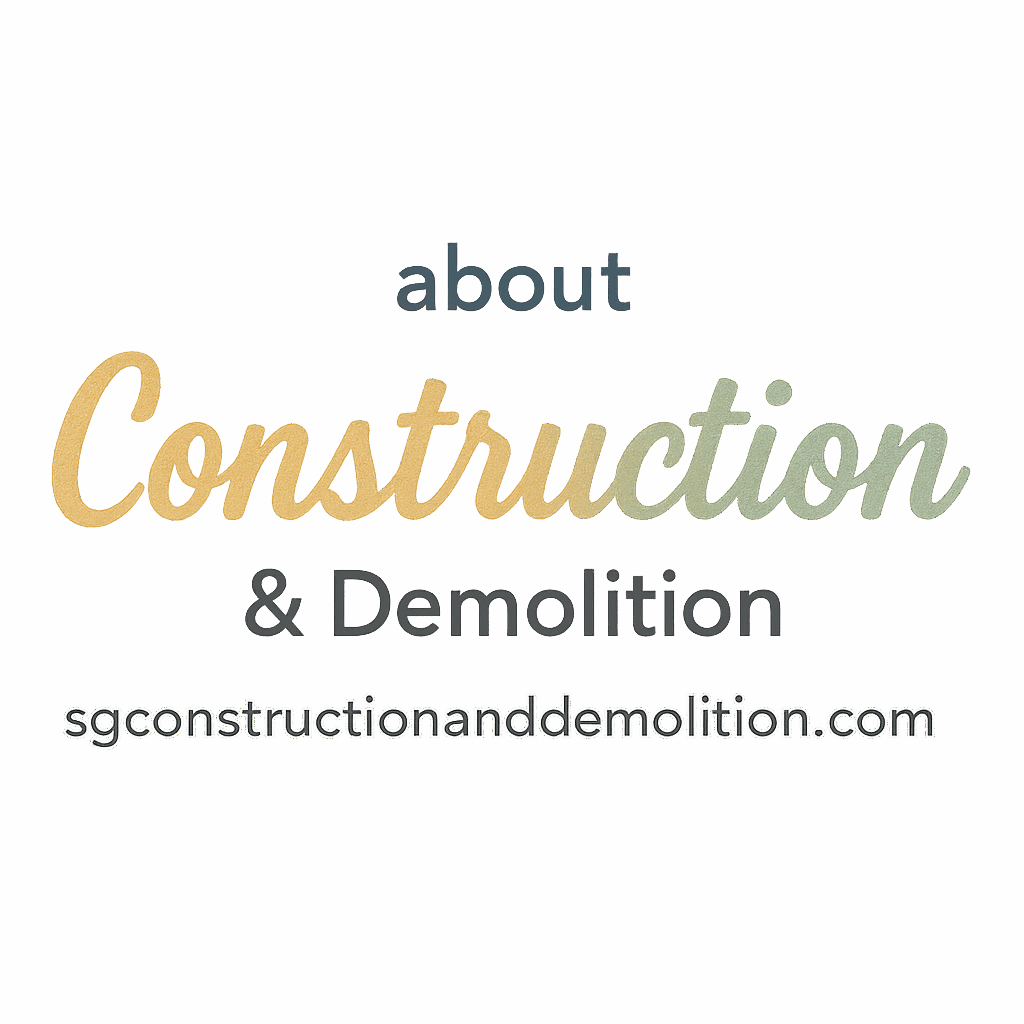Introduction: Why Construction Safety Isn’t Optional
Let’s be honest—construction sites are some of the most dangerous workplaces out there. Between towering scaffolds, heavy-duty machinery, and unpredictable weather, things can go sideways in seconds. That’s why following proper safety protocols isn’t just about checking off regulatory boxes—it’s about keeping people alive.
In this article, we’re diving into the 5 essential safety protocols every construction site must follow, whether you’re a rookie or a seasoned contractor. Trust me, this isn’t just for compliance—it’s for your team, your project, and your peace of mind.
(And yes, this guide also includes essential insights from our partners at SG Construction and Demolition).
1. Personal Protective Equipment (PPE) Saves Lives
If there’s one acronym that could mean the difference between a minor injury and a major accident, it’s PPE.
What Counts as PPE on Construction Sites?
Think hard hats, high-visibility vests, gloves, steel-toed boots, safety goggles, and hearing protection. Depending on the job, this might also include face shields, respirators, or full-body suits.
Want the full lowdown on tools and gear? Check out the dedicated section at Tools & Equipment.
Why PPE Compliance Is Often Ignored
Let’s face it—people skip PPE for comfort or speed. But this shortcut often leads to preventable accidents. The truth? It takes two seconds to put on gear that can save your life.
Tips to Enforce PPE Use on Site
- Mandatory safety briefings every morning
- Random PPE checks
- Reward systems for full compliance
Don’t forget to tag your knowledge with #equipment and #power-tools for future reference.
2. Site Planning and Safety Audits
You wouldn’t build a house without a blueprint, right? Same goes for safety. It all starts with smart planning.
Planning = Prevention
Create a detailed risk assessment before a single hammer swings. Map out hazards, plan material storage, and assign safe access points. Learn more at Planning & Safety.
Regular Safety Inspections
Even a well-planned site can fall into chaos without routine audits. Assign a safety officer to conduct inspections weekly, if not daily.
Documentation and Logs Matter
Maintain logs for:
- Site injuries
- Safety breaches
- Daily safety meetings
Not only does this help in case of legal issues, but it also helps you spot trends and fix recurring issues.
3. Equipment Handling and Operation Protocols
No one should be operating heavy machinery unless they’re trained—and no exceptions here.
Only Trained Operators Allowed
Forklifts, cranes, jackhammers—these aren’t toys. Make sure only licensed personnel handle them.
Need to brush up on your demolition equipment? Don’t miss Demolition Techniques.
Equipment Maintenance and Daily Checks
Before starting up, every piece of machinery should undergo a pre-operation check. This includes checking:
- Fuel or battery levels
- Brakes and hydraulics
- Warning signals and lights
Smart Tools and Modern Tech in Safety
From smart wearables to AI-driven project tracking, modern tools are making construction safer. Check out the innovations at Green & Smart Trends and follow the tag #smart-tech.

4. Fall Protection Measures
Falls are the leading cause of fatalities in construction. Period.
Common Fall Hazards on Site
- Unprotected edges
- Slippery scaffolds
- Improper ladder use
Harnesses, Guardrails, and Netting
Fall protection isn’t one-size-fits-all. Depending on the task, you might need:
- Personal fall arrest systems
- Safety nets
- Guardrails and toe boards
The Role of Safety Training for Heights
No one should be working at heights without proper training. Implement monthly refreshers and conduct surprise drills. Planning to tackle heights? Start at Construction Basics.
5. Emergency Response and First Aid Readiness
When disaster strikes, every second counts.
Having an Action Plan Saves Seconds (and Lives)
Every site must have a written emergency response plan covering:
- Fires
- Chemical spills
- Structural collapse
- Electrical hazards
Tag this one under #planning and #steps.
First Aid Stations and Trained Personnel
Make sure every zone has:
- A clearly marked first aid station
- At least one trained first responder
- Access to defibrillators and burn kits
Fire Safety and Evacuation Drills
Have extinguishers, sprinklers, and conduct evacuation drills quarterly. And make sure everyone knows where the exits are.
What Happens If Protocols Aren’t Followed?
Non-compliance isn’t just risky—it’s expensive. We’re talking lawsuits, shutdowns, fines, and worst of all, loss of life.
Besides the legal nightmare, think of the damage to your brand reputation. Would you want to be known as “that unsafe site”?
Embedding a Culture of Safety: Everyone Plays a Role
From the project manager to the newest apprentice, safety is everyone’s job. Use signage, team huddles, and open communication to make safety part of your work DNA.
For insights on managing people and protocols, visit our guide on Project Management.
Green and Smart Safety Innovations
Eco-friendly and tech-forward solutions are changing the game. Think solar-powered site lighting, drone surveillance, and AI alerts for danger zones.
Stay ahead of the curve at Green Smart Trends and explore #trends.
Conclusion: Be Safe or Be Sorry
Construction safety isn’t optional. It’s essential. With the right planning, tools, training, and awareness, your site can operate efficiently—and safely.
Remember: Every protocol you ignore is a risk you’re choosing. Don’t wait for a wake-up call. Start now, because safety isn’t just a checklist—it’s a mindset.
FAQs
1. What is the most important safety protocol in construction?
While all are critical, proper use of PPE is often the first line of defense against injury.
2. How often should a construction site be audited for safety?
Ideally, sites should have weekly safety inspections, with daily walkarounds by supervisors.
3. Who is responsible for enforcing safety protocols?
Everyone plays a role, but the site safety officer typically oversees compliance and training.
4. What kind of training should workers have?
At minimum, all workers need site-specific safety training, PPE usage, and equipment operation basics.
5. How can I promote a culture of safety?
Hold daily briefings, reward safe behavior, and involve all team members in identifying hazards.
6. What are common fall protection methods?
Harnesses, safety nets, and guardrails are the go-to solutions. Training is also essential.
7. Are smart technologies worth the investment for safety?
Absolutely. Innovations like AI alerts and wearables can detect risks before accidents happen.


